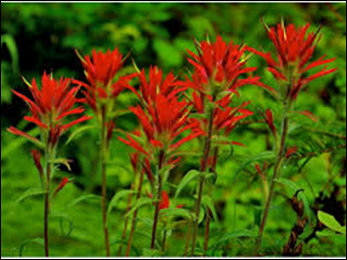What are the Medicinal Properties of Bee Balm (Monarda)?

Introduction
Bee balm is the most common name of Monarda genus which belongs to mint family, i.e. Lamiaceae. It is most commonly found in North America. These are the flowers which have one of the most striking appearances with bright color. It appears in summer and is perennials. Due to the captivating appearance of its flowers, this plant is used widely for gardening purposes. Flowers are two lipped, asymmetrical and are dense with globular terminal heads. They are widely cultivated in North America for around 16 species that are native to the place. Stems are tall and sturdy in a spreading manner. It is also said that these flowers have delicate beauty with good longevity. Bee balm can stand rough and wild weather conditions. Its flowers usually come in pink, red or lavender color. It’s name is due to great liking of bees for the plant. It can be planted with the plant that depends upon bees for their pollination. It is a perennial plant; hence nice flower growing can only be seen in the second and later year. Bee balm is a great plant for the people who want to grow rough vegetable and flowering plant.
But Bee balm is not only used for attracting butterflies and hummingbird, also do possess many medicinal properties and have a very good taste.
General Description
These are the perennial plants that grows up to the height of 20-90cm. Leaves are serrated, slender and lanceolate that are arranged oppositely on the stem which is hairless or has sparse hair. Stem is 7-14 cm long while flowers are bilaterally symmetric and tubular with lips, one narrow the other wider. Cultivated forms of plant have double flowers while the wild one has only one flower. Flowers have both male and female structures in it. Typically they are present in clusters with bracts of leaves. Color of the flowers may vary from pink, purple to red.
- Common Name- Bee balm, horsemint, bergamot, oswego tea
- Botanical Name- Monarda didyma
- Chinese Name- Mei Guo Bo He
- Family- Lamiaceae
Cultivation
Bee balm plants grows well in well drained soil and partial shade. At least 18-24 inches of spacing should be there between two flowers for proper growth of them.
It is usually cultivated for garden purpose and also used for attracting humming birds, butterflies and bees. Some of its hybrids are also developed so that essential oil can be extracted from them for using in cooking. Wild flowers are more robust as compared to the cultivated one.
Medicinal Properties of Bee Balm
- Digestive
- Decongestant
- Antimicrobial
- Analgesic
- Antispasmodic
- Antifungal
- Nervine tonic
- Anti-inflammatory
- Nutritional
- Anti-irritant
Therapeutic Properties of Bee Balm
- Owing to the anti-inflammatory and antimicrobial properties this herb can be used to treat dental caries, gingivitis and tooth ache.
- It is a potent digestive which relieves nausea, vomiting and indigestion. Bee balm aids the digestion and help to treat ailments caused due to improper digestion.
- Antispasmodic property of this herb helps to deal with menstrual cramps naturally as well as cough.
- Bloating is also relieved with the use of Bee balm.
- Applying locally on the site of bee sting, scrapes or rashes relieves the irritation, pain and swelling of the affected area as it possesses anti-irritant and anti-inflammatory properties.
- Its soothing effect on nerves and nervous system helps to treat the stress and anxiety naturally. Hence is also known as a nervine tonic.
- Herbal tea prepared from Bee balm helps to relieve all the digestive troubles like indigestion, bloating and gas formation. Dried flowers can be used to prepare the tea or fresh petals can also be used.
- Decongestant and antimicrobial properties of this helps to relieve cold and cough naturally.
- Balm made from this herb or steam taken of this herb helps to clear the congested nasal passages.
- Mouth wash prepared from its decoction can help to treat mouth sores and sore throat, owing to the anti-inflammatory and soothing properties of the herb.
- Due to its good taste, Bee balm can also be used for eating or cooking purpose in the form of topping of salad, making cookies, bread and muffins from it and making vinegar by mixing it in apple cider vinegar.



